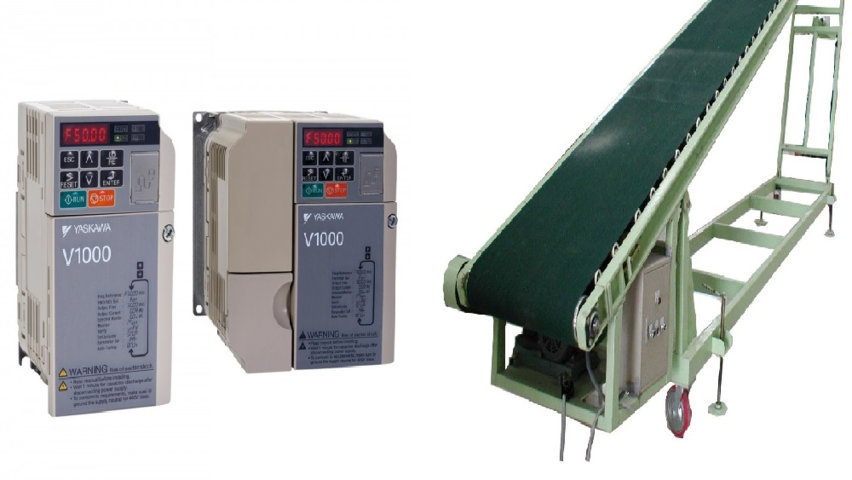One of the issues that inverter users need to pay attention to is inverter capacity. The demand for inverters in life and production activities is increasing day by day. But that does not mean that you have a good understanding of Inverter as well as can choose the type of inverter with the right capacity for the equipment and machinery you use.
So how can you choose the right type of inverter with the right capacity to meet your intended use and work needs? Follow along with this article, VPIC will share with you how to choose the right inverter capacity for your needs.

1 – What is the concept of an inverter?
Inverter is also known as inverter, this is a device that converts alternating current at one frequency into alternating current at another frequency.
Currently, there are many different types of inverters with different input and output sources. So you need to clearly distinguish each type to be able to have the most suitable plan to use
See details >> What is an inverter? Share information about Inverters
With an inverter, there are many things to take care of such as AC, DC, reactor, discharger, discharge resistor, etc. But today, VPIC will only focus on inverter power analysis. So that you can choose the right capacity for the engine to use.
2 – Instructions for choosing the right inverter capacity for the motor
If correct in theory, you just need to choose an inverter with a capacity equal to the capacity of the motor. But in fact, to help save costs as well as increase the durability of the motor, you should choose the inverter capacity in the following ways:
2.1 – Based on the motor current to choose the inverter capacity
Why rely on the motor current to choose? That’s why there are some types of 3-phase motors that don’t have a label, so determining the motor’s capacity is impossible if you are not an experienced technician. Therefore, the new must rely on the motor current to choose. By running the current with no-load or with a load to determine the rated current, once the current is determined, this current will be compared with the rated current of each type of inverter capacity. Thus, we can choose the exact capacity of the inverter for the motor.
When using the motor current to select the inverter, it is necessary to determine the correct current corresponding to how much voltage to be able to choose correctly. For example when the motor is running with 40A you would assume the inverter would be around 11kW 220V but you forgot the motor voltage could be 380V.
2.2 – Based on the application of each motor to choose the inverter capacity
Why is it possible to choose inverter capacity based on the application of the motor? This may be what you are wondering. But in fact, today’s inverters are designed specifically for each use. Therefore, the load characteristics of each application will also be different, so the choice of inverter with the right capacity will also vary depending on the purpose of using the motor.
According to the application of the motor, there are 3 types as follows:
+ Light-load motor is used for normal water pumps (with high-pressure water pumps, not in the form of light loads), conveyors, fan loads, etc. With this type of motor, just choose the inverter capacity equal to the motor capacity or maybe 1 level lower and still work well.
+ Medium-load motor such as gravure printer, plastic injection machine, etc. should choose an inverter with a capacity that fits the motor or is larger than 1 level.
+ Motor with heavy loads or more such as lifting machines, crushers, centrifuges, etc. With this type, it is necessary to choose a capacity inverter that is 1-2 times larger than the motor capacity to ensure good operation and high durability.

3 – Some questions related to inverter capacity
3.1 – The larger the inverter capacity, the more durable?
Exactly the same, but the large capacity inverter, the cost is also high, increasing the cost. In fact, you only need the type of inverter with a larger capacity of 1-2 levels to help prolong the life of the inverter.
But you should also note that there are specific types of motors for using too large a capacity inverter that will cause the inverter to fail or even explode both the inverter and the motor.
With choosing an inverter with a capacity greater than the capacity of the motor, you need to reset the parameters of the motor to better protect the inverter motor.
3.2 – Large capacity motors can be used with smaller capacity inverters?
With only a few cases of small capacity inverters can run for large motors, only when this motor runs under load leading to low amps, so when using small capacity inverters, it will still work well.
One thing is for sure, when using a small-capacity inverter for a large-capacity motor, the life of the inverter is not durable, the device will be hot, leading to easy damage. So only with some force majeure cases people use small inverters for large capacity motors.
4 – Information to prepare to buy the right inverter
The power supply voltage for the inverter is usually 1 phase AC 110V, 1 phase AC 220V, 3 phases AC 220V, 3 phases AC 380-400V.
Information about the type of motor, capacity and voltage used for the motor is how much. Because there are several types of power supplies for inverters and motor outputs that differ in voltage, it is necessary to clearly distinguish the power supply.
In addition, it is also necessary to prepare product information such as product code, cause of damage, engine running for what application so that the technician can advise exactly what type of inverter has the right capacity for you.
In addition, the size of the inverter also needs to be taken into account if you place it in a narrow place.
For more information and advice on choosing the right inverter for your needs, please contact Hotline: 0896 422 224

 Tiếng Việt
Tiếng Việt